- Courses
- GS Full Course 1 Year
- GS Full Course 2 Year
- GS Full Course 3 Year
- GS Full Course Till Selection
- Answer Alpha: Mains 2025 Mentorship
- MEP (Mains Enrichment Programme) Data, Facts
- Essay Target – 150+ Marks
- Online Program
- GS Recorded Course
- Polity
- Geography
- Economy
- Ancient, Medieval and Art & Culture AMAC
- Modern India, Post Independence & World History
- Environment
- Governance
- Science & Technology
- International Relations and Internal Security
- Disaster Management
- Ethics
- NCERT Current Affairs
- Indian Society and Social Issue
- NCERT- Science and Technology
- NCERT - Geography
- NCERT - Ancient History
- NCERT- World History
- NCERT Modern History
- CSAT
- 5 LAYERED ARJUNA Mentorship
- Public Administration Optional
- ABOUT US
- OUR TOPPERS
- TEST SERIES
- FREE STUDY MATERIAL
- VIDEOS
- CONTACT US
PLACES IN NEWS 8th MAY 2025
PLACES IN NEWS 8th MAY 2025

Bhimgad Wildlife Sanctuary
Why in news?
a. Unrestricted public trespassing in Bhimgad Wildlife Sanctuary persists, alarming conservationists over threats to its ecological sensitivity.
About Bhimgad Wildlife Sanctuar
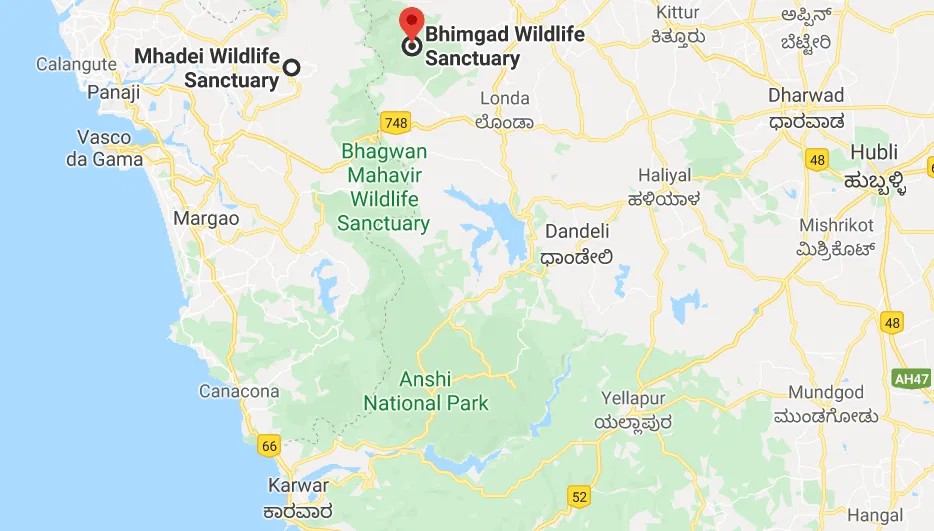
- 1. Location and Geography:
- Bhimgad Wildlife Sanctuary (BWS), located in the Belgaum district of Karnataka, spans the Western Ghats, a global biodiversity hotspot.
- It was officially declared a wildlife sanctuary in December 2011. The sanctuary derives its name from the historic Bhimgad Fort, built by Chhatrapati Shivaji in the 17th century to resist Portuguese advances.
- Geographically, BWS lies to the north of Dandeli Wildlife Sanctuary, north-west of Bhagwan Mahaveer Sanctuary and Mollem National Park, north of Netravali Wildlife Sanctuary, and east of Mhadei Wildlife Sanctuary.
-
- Its landscape comprises hills, valleys, plateaus, and is interspersed with perennial streams and the headwaters of rivers like the Tillari, Malaprabha, and Mhadei.
- The sanctuary is also known for the Barapede Caves, the only known breeding site for the endangered Wroughton’s Free-tailed Bat.
- Flora and Fauna:
- Tropical and subtropical moist broadleaf forests, home to towering trees such as Malabar teak, rosewood, dipterocarp species, and a rich diversity of medicinal plants, dominate BWS.
- The sanctuary shelters endangered animals like the Indian sloth bear, Indian pangolin, and the elusive black panther.
- Other species include the Malabar giant squirrel, gaur, sambar deer, and notable birds such as the Malabar trogon and the great Indian hornbill.
- Its rocky outcrops serve as ideal breeding grounds for the King Cobra, the world’s longest venomous snake.
Kaleshwaram Lift Irrigation Project
Why in news?
- The National Dam Safety Authority found "irreparable damage" in three Kaleshwaram Project barrages, raising serious structural safety concerns.
About Kaleshwaram Lift Irrigation Project:
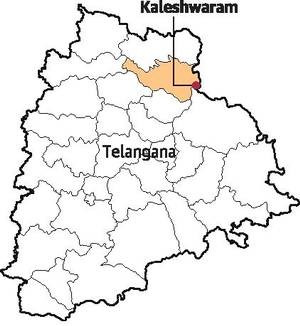
- The Kaleshwaram Lift Irrigation Project (KLIP) is a multi-purpose irrigation initiative built on the Godavari River in Kaleshwaram, Bhupalpally district, Telangana.
- It is the world’s largest multi-stage lift irrigation project, with its farthest upstream point located at the confluence of the Pranahita and Godavari rivers.
- Notably, the Pranahita River itself is formed by merging three major tributaries: Wardha, Painganga, and Wainganga, collectively creating the seventh-largest drainage basin in the Indian subcontinent.
- KLIP is designed to meet both irrigation and drinking water needs, covering nearly 45 lakh acres across 20 of Telangana’s 31 districts, including major urban centres like Hyderabad and Secunderabad.
- The project aims to lift and utilise 240 TMC (Thousand Million Cubic Feet) of water, allocated for agriculture, municipal supply, industrial use, and drinking water in the surrounding rural areas.
- KLIP represents a significant effort by Telangana to address water scarcity and support agricultural growth in the region.
Petra
Why in news?
- Flash floods in southern Jordan prompt the evacuation of 1,800 tourists from Petra, highlighting the region's vulnerability to sudden extreme weather events.
About Petra:
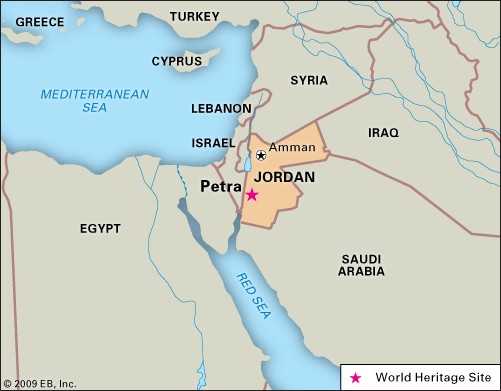
1. Location and Geography:
- Petra, known in Arabic as Al-Batrāʾ and in ancient times as Raqmu, is located in
southern Jordan, nestled between the Red Sea and the Dead Sea.
-
- This ancient city lies within a rugged, mountainous desert terrain and is carved directly into rose-red sandstone cliffs, giving it the nickname “Rose City.”
- Petra’s strategic location placed it at the crossroads of several major ancient trade routes, including the incense trade that connected Arabia with the Mediterranean world.
- The site's semi-arid environment and natural defences made it a secure and thriving settlement for ancient peoples.
- Historical and Cultural Significance:
- Petra has been inhabited since 7000 BCE, but it rose to prominence when the
Nabataeans, a nomadic Arab tribe, settled there in the 4th century BCE.
-
- By the 2nd century BCE, Petra became the capital of the Nabataean Kingdom, flourishing as a key trading hub due to its control over lucrative caravan routes.
- The Nabataeans demonstrated remarkable expertise in stone carving, water conservation, and agriculture, constructing elaborate rock-cut tombs, temples, and sophisticated water conduit systems.
-
- At its peak in the 1st century CE, Petra had around 20,000 inhabitants, and iconic structures like Al-Khazneh (The Treasury) were built, likely as royal mausoleums.
- The city declined after its annexation by Rome in 106 CE, the rise of sea trade routes, and a devastating earthquake in 363 CE.
- Rediscovered in 1812 by Swiss explorer Johann Ludwig Burckhardt, Petra is now a UNESCO World Heritage Site and one of the New Seven Wonders of the World, attracting nearly a million visitors annually.
Sanaa
Why in news?
a. On May 6, 2025, Israel launched significant airstrikes on Yemen's capital, Sanaa, targeting the Houthi-controlled international airport.
About Sanaa:
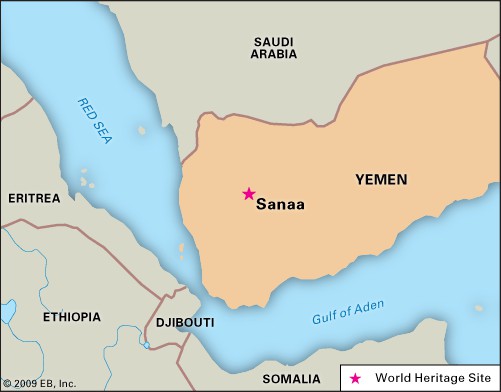
1. Location and Key Features:
-
- Sanaa, the capital and largest city of Yemen, is situated in a mountainous region at an elevation of over 2,300 meters (7,500 feet) above sea level, making it one of the highest capital cities in the world.
- Located in the western part of the country, Sanaa has long been a political, economic, and cultural hub of Yemen.
- The city is known for its distinctive multi-story mudbrick buildings, some of which date back over 1,400 years, and its Old City of Sanaa, a UNESCO World Heritage Site.
- Despite its architectural beauty and cultural heritage, Sanaa has been deeply impacted by years of civil war, political instability, and foreign interventions.
- Origin of Houthis:
- The Houthi movement, officially known as Ansar Allah, originated in the 1990s
in the northern Saada governorate of Yemen.
-
- It was founded by Hussein Badreddin al-Houthi, a member of the Zaydi Shia minority, to address the marginalisation of Zaydis and to counter growing Saudi influence and Salafist ideology in Yemen.
- Initially, a religious and cultural revivalist group, the Houthis transformed into an armed political movement by the early 2000s.
- After multiple conflicts with the Yemeni government, they eventually seized control of Sanaa in 2014, triggering the ongoing civil war and leading to a Saudi-led military intervention in 2015.
- Israel–Houthis Conflict:
- Tensions between Israel and Houthi-controlled Yemen have escalated sharply since late 2023, particularly following Israel's military operations in Gaza.
- The Houthis, aligning themselves with the “Axis of Resistance” (Iran, Hezbollah, Hamas, etc.), have launched missile and drone attacks on Israel, as well as commercial shipping in the Red Sea, claiming solidarity with the Palestinian cause.
- The most recent flashpoint occurred in May 2025, when the Houthis launched a missile attack that landed near Israel’s Ben Gurion Airport, injuring several civilians.
- In retaliation, Israel conducted airstrikes on Sanaa International Airport, destroying runways, the control tower, aircraft, and nearby infrastructure, including power plants.
- The attack rendered the airport completely inoperative and caused estimated damages of $500 million.
- Despite a U.S.-brokered ceasefire in Gaza, the Houthis have declared their operations against Israel will continue, indicating their autonomous military stance and deep ideological alignment against Israeli actions in the region.
Rwanda
Why in news?
a. Rwanda confirms negotiations with the Trump administration to accept migrants, aligning with past agreements amid shifting U.S. immigration policies.
About Rwanda:
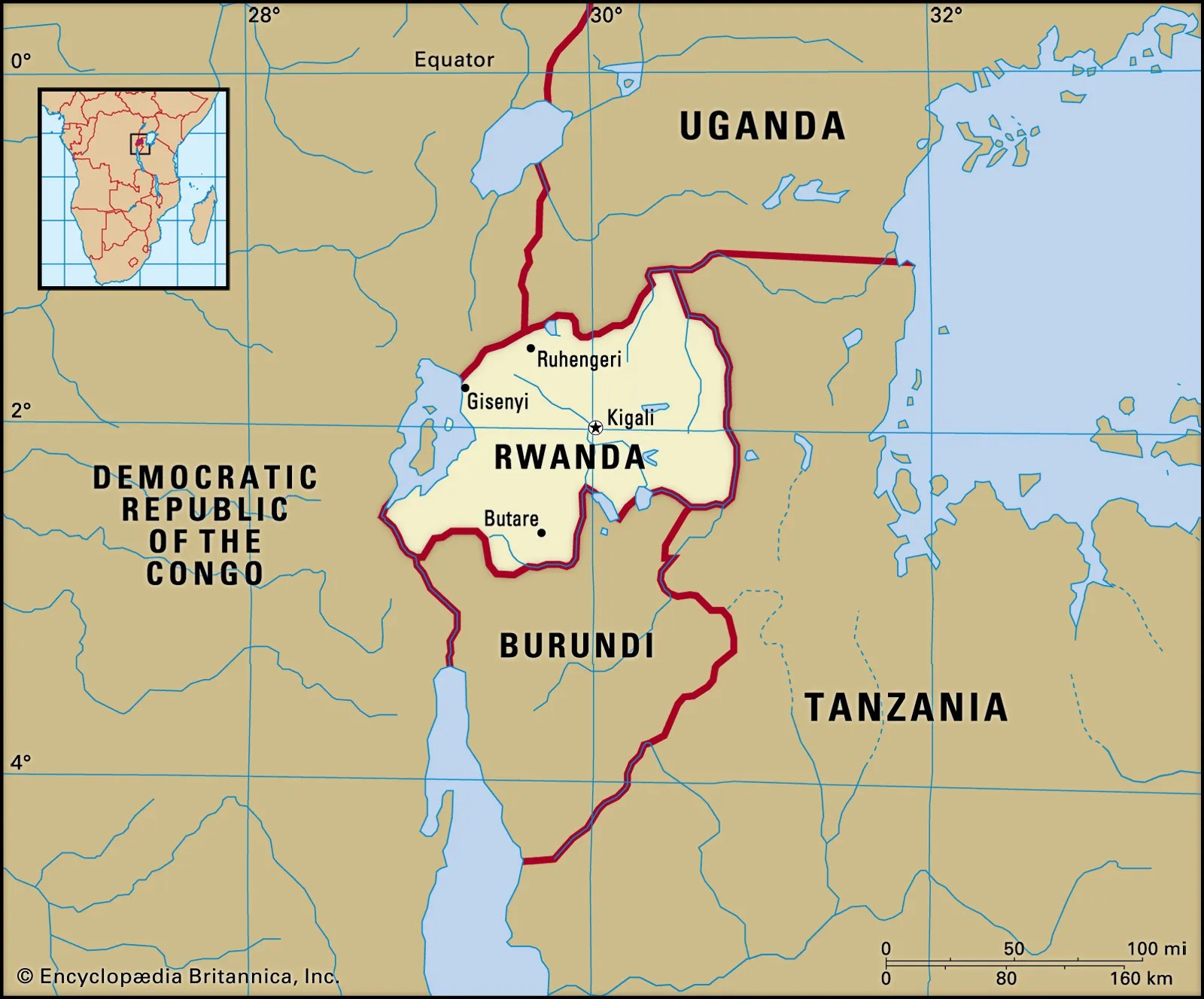
- 1. Location and Geography:
- Rwanda, often referred to as the "Land of a Thousand Hills," is a landlocked country located in East-Central Africa.
- It is bordered by Uganda to the north, Tanzania to the east, Burundi to the south, and the Democratic Republic of the Congo to the west.
-
- Despite its small size, Rwanda is known for its hilly terrain, fertile volcanic soil, and numerous lakes and rivers, including Lake Kivu and the Nyabarongo River.
- The country lies just south of the Equator and has a temperate tropical highland climate, with cooler temperatures due to its elevated altitude.
- Rwanda’s Role in Trump's Immigration Policy:
- Rwanda has increasingly played a strategic role in U.S. and European migration policies, particularly under the Trump administration’s approach to outsourcing asylum processing.
- In 2025, Rwanda confirmed talks with the Trump administration to potentially host migrants and asylum seekers, including those attempting to enter the United States illegally.
- This aligns with Rwanda’s prior agreements with countries like the UK and Israel, where it has accepted African migrants and asylum seekers in exchange for economic and development aid.
- Under Trump’s revived strict immigration stance, relocating migrants to third-party countries is part of a broader effort to deter illegal crossings and reduce pressure on the U.S. immigration system.
- Rwanda, due to its political stability, existing infrastructure, and willingness to cooperate, has emerged as a key partner in this controversial policy shift.
- While such arrangements have drawn international criticism, Rwanda positions itself as a humanitarian actor contributing to global migration solutions.




